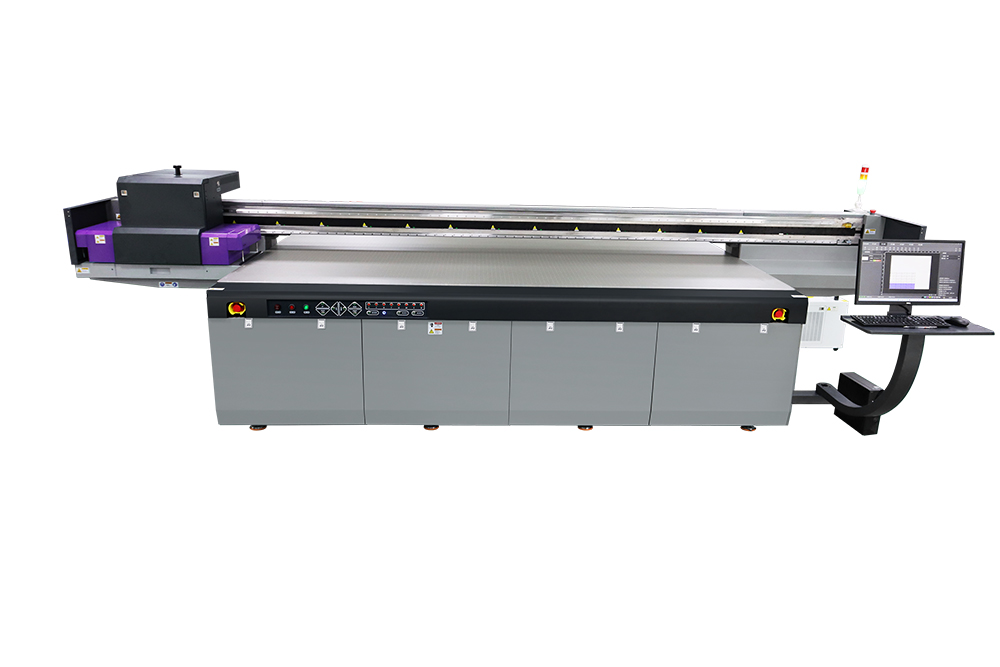UV Flatbed Printer: Understanding the Importance of Printhead Alignment
In the realm of digital printing, UV flatbed printers have emerged as a versatile and powerful tool, revolutionizing the way images and designs are applied to a wide array of substrates. From rigid materials like glass, metal, and ceramics to flexible media such as fabrics and vinyl, these printers offer unparalleled precision and detail. One of the critical factors that determine the quality and efficiency of a UV flatbed printer is the alignment of its printheads. This aspect, often overlooked but fundamentally essential, plays a pivotal role in ensuring that the final printed output meets the highest standards of excellence.

The Role of Printheads in UV Flatbed Printing
UV flatbed printers utilize one or more printheads to deposit ink onto the surface of the substrate. These printheads contain numerous nozzles, each responsible for ejecting tiny droplets of ink with remarkable accuracy. The ink used in these printers is specially formulated to cure almost instantly when exposed to ultraviolet light, which solidifies the ink and creates a durable, high-quality print.
The printheads are a complex engineering marvel, designed to operate at high speeds while maintaining consistent droplet size and placement. They are typically mounted on a carriage that moves back and forth across the substrate, depositing ink in a controlled manner. The alignment of these printheads is crucial because even the slightest misalignment can lead to visible artifacts in the print, such as banding, streaking, or color misregistration.
Why Printhead Alignment Matters
Image Quality: Perhaps the most obvious reason for ensuring proper printhead alignment is the impact it has on image quality. When printheads are perfectly aligned, the ink droplets merge seamlessly on the substrate, creating smooth, continuous tones and sharp, well-defined edges. Misalignment, on the other hand, can result in visible gaps or overlaps between adjacent passes of the printhead, leading to a noticeable degradation in print quality.
Color Accuracy: UV flatbed printers often use multiple printheads, each responsible for a different color (cyan, magenta, yellow, and black, plus additional colors for extended gamut printing). Accurate alignment ensures that each color is deposited in the correct position relative to the others, preserving the intended color balance and saturation. Misalignment can cause color shifts, resulting in unnatural-looking hues and tones.
Efficiency and Productivity: A well-aligned printer operates more efficiently, reducing the need for reprints due to quality issues. This not only saves time but also minimizes waste and lowers production costs. In a commercial environment where time is money, maintaining optimal printhead alignment is a critical factor in maximizing profitability.
Printhead Longevity: Proper alignment can also extend the lifespan of the printheads. Misalignment can cause the nozzles to work harder than necessary, leading to premature wear and potential clogging. By ensuring that the printheads are correctly aligned, you can help prevent these issues and prolong the life of your equipment.
Factors Affecting Printhead Alignment
Several factors can contribute to printhead misalignment over time:
Mechanical Wear: The constant motion of the printheads and the carriage can cause mechanical wear, leading to slight shifts in alignment.
Environmental Conditions: Temperature fluctuations and humidity can affect the materials used in the printer, causing expansion or contraction that impacts alignment.
Ink Viscosity: Changes in ink viscosity due to temperature or age can affect the way the ink is ejected from the nozzles, potentially altering the droplet trajectory and impacting alignment.
User Intervention: Improper handling or maintenance procedures, such as roughly adjusting the printheads or failing to follow recommended cleaning and calibration routines, can also lead to misalignment.
Ensuring Proper Printhead Alignment
Maintaining proper printhead alignment requires a combination of regular maintenance, careful handling, and the use of advanced calibration tools and techniques. Here are some best practices:
Regular Calibration: Most UV flatbed printers come equipped with automated calibration routines that should be run periodically to ensure optimal alignment. These routines typically involve printing a test pattern and using sensors to detect any misalignment, followed by automatic adjustments to correct it.
Manual Adjustments: In some cases, manual adjustments may be necessary. This should only be attempted by trained technicians who understand the intricacies of the printer’s mechanics and have the tools required to make precise adjustments.
Environmental Control: Maintaining a stable environment in terms of temperature and humidity can help minimize the effects of environmental factors on printhead alignment.
Ink Management: Using high-quality ink and following the manufacturer’s guidelines for storage and handling can help maintain consistent ink viscosity, reducing the likelihood of alignment issues related to ink performance.
Preventive Maintenance: Establishing a preventive maintenance schedule that includes regular cleaning, inspection, and calibration can help identify and address potential alignment issues before they become problematic.
Conclusion
Printhead alignment is a critical aspect of UV flatbed printing that directly impacts the quality, accuracy, and efficiency of the printing process. By understanding the importance of proper alignment and taking the necessary steps to maintain it, printer operators can ensure that their equipment produces the highest quality prints consistently. Whether you’re a professional printer, a sign shop owner, or a manufacturing company relying on UV flatbed printing for product customization, investing time and resources into printhead alignment will pay off in terms of improved print quality, increased productivity, and reduced operational costs.
In the fast-paced world of digital printing, where precision and detail are paramount, the alignment of your UV flatbed printer’s printheads is not just a nice-to-have; it’s an essential component of success. By prioritizing printhead alignment and incorporating it into your regular maintenance routine, you can unlock the full potential of your UV flatbed printer and deliver outstanding results every time.
